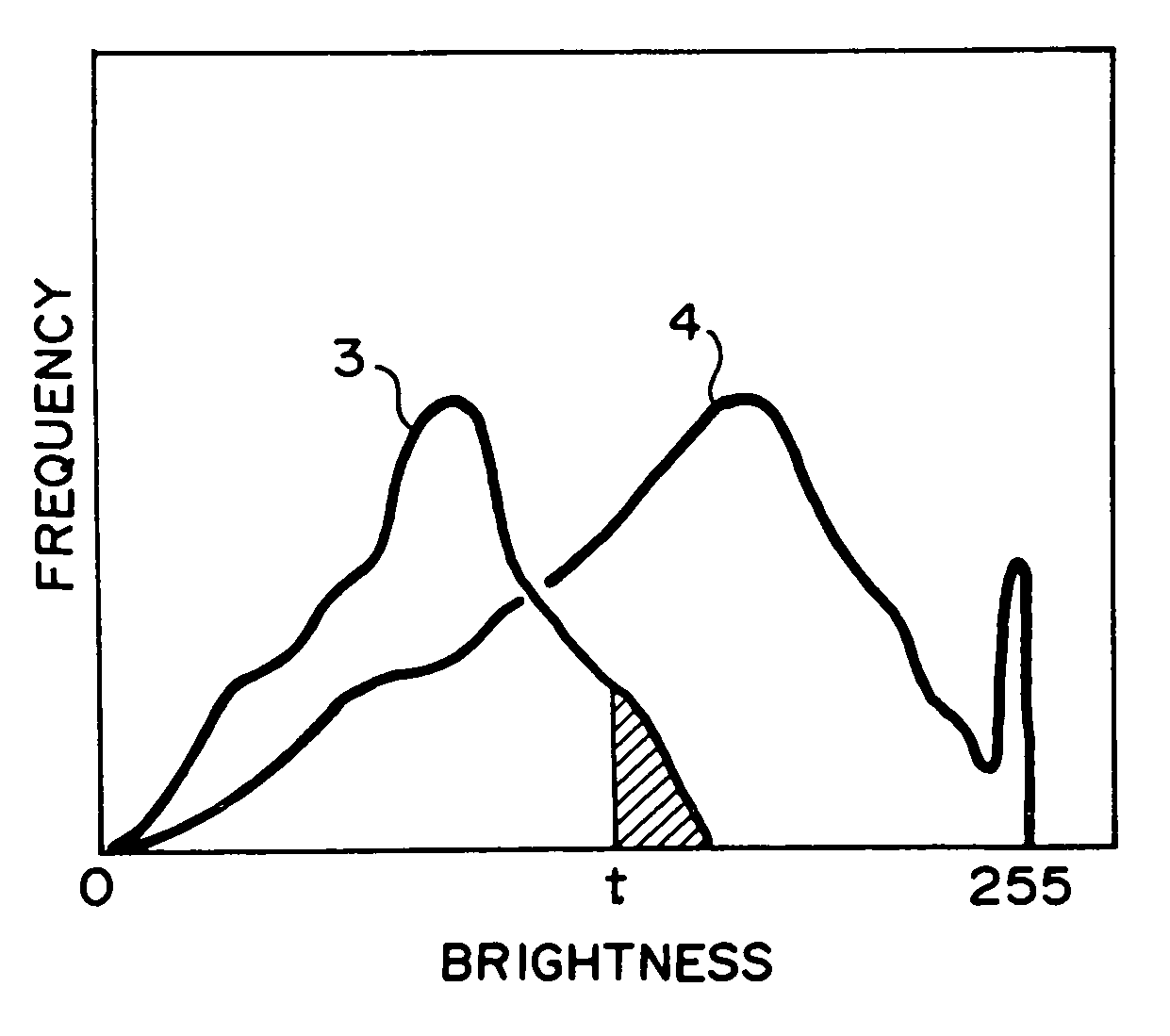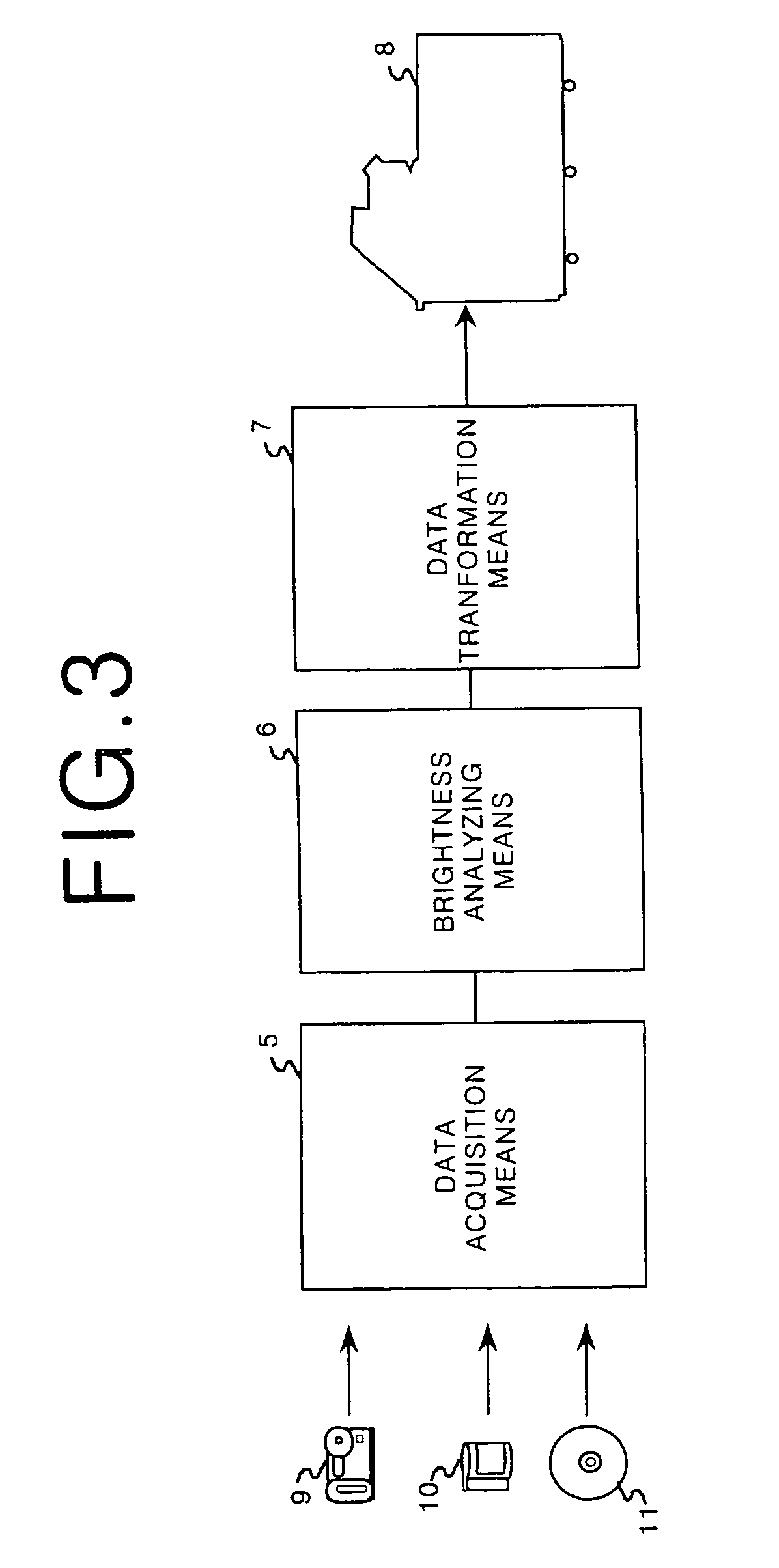Method of adjusting the brightness of an image, digital camera and image processor using the method
- Summary
- Abstract
- Description
- Claims
- Application Information
AI Technical Summary
Benefits of technology
Problems solved by technology
Method used
Image
Examples
Embodiment Construction
[0046]A preferred embodiment of the present invention will hereinafter be described in detail in reference to the drawings. Initially, a description will be made of the human visual characteristic regarding brightness. FIG. 1 shows a brightness histogram example of negative film appropriately exposed by a conventional method. As shown in the figure, it is known that, in an appropriately exposed image, clipping 2 (1% or so) always occurs at the maximum brightness of brightness histogram 1.
[0047]It is also known that, if the dark portion (whose density is high) of an exposed image is not processed but only the bright portion is adjusted, then the impression of brightness received from the entire image will vary.
[0048]Particularly in a brightness histogram, if for an image in which the frequency of a pixel becomes gradually lower as brightness becomes higher, a value equal to or greater than a predetermined value is clipped at the predetermined value (the toe of the highlighted portion...
PUM
 Login to View More
Login to View More Abstract
Description
Claims
Application Information
 Login to View More
Login to View More - R&D
- Intellectual Property
- Life Sciences
- Materials
- Tech Scout
- Unparalleled Data Quality
- Higher Quality Content
- 60% Fewer Hallucinations
Browse by: Latest US Patents, China's latest patents, Technical Efficacy Thesaurus, Application Domain, Technology Topic, Popular Technical Reports.
© 2025 PatSnap. All rights reserved.Legal|Privacy policy|Modern Slavery Act Transparency Statement|Sitemap|About US| Contact US: help@patsnap.com



